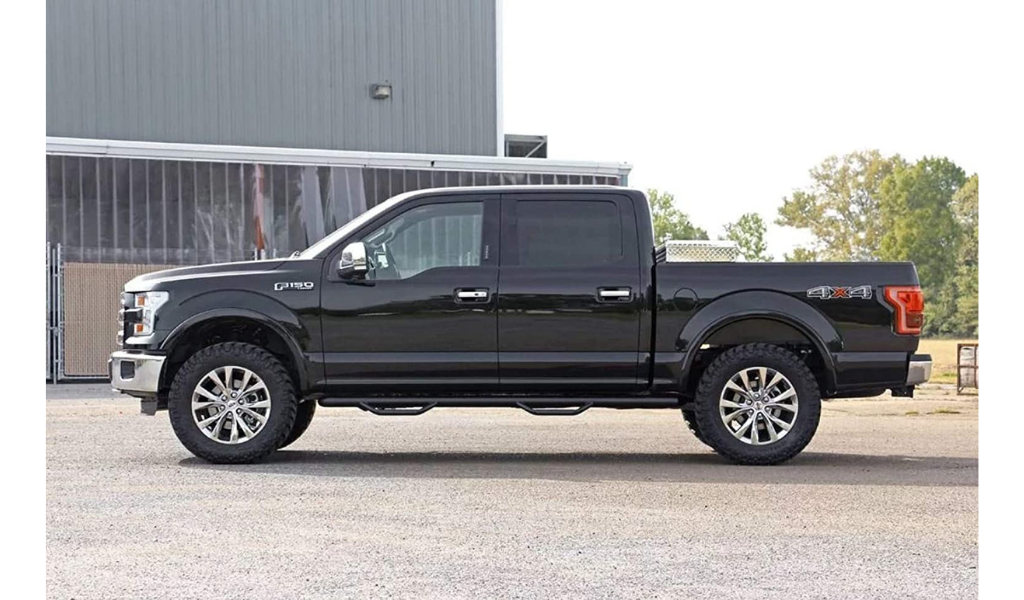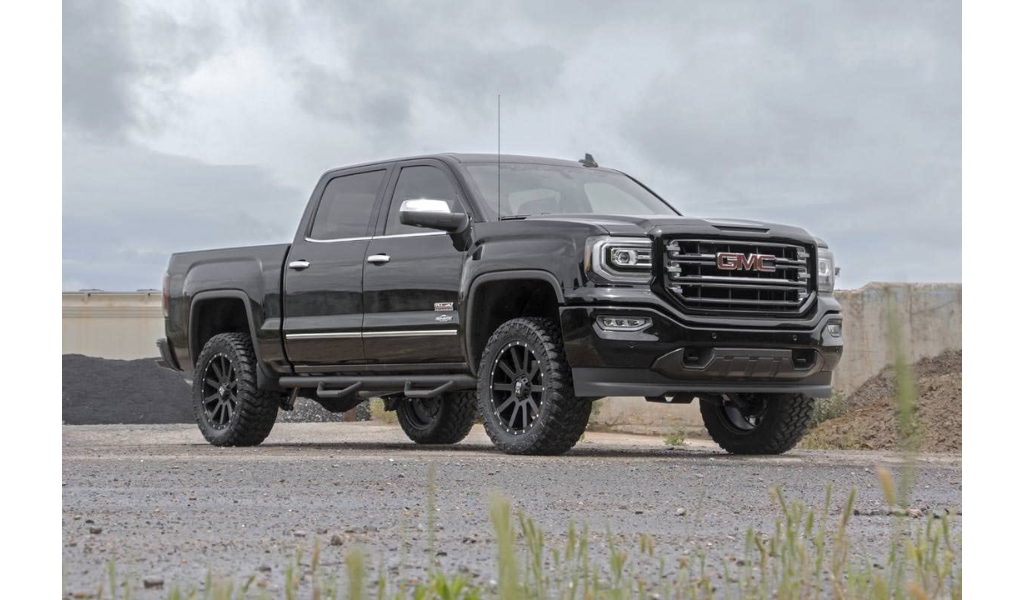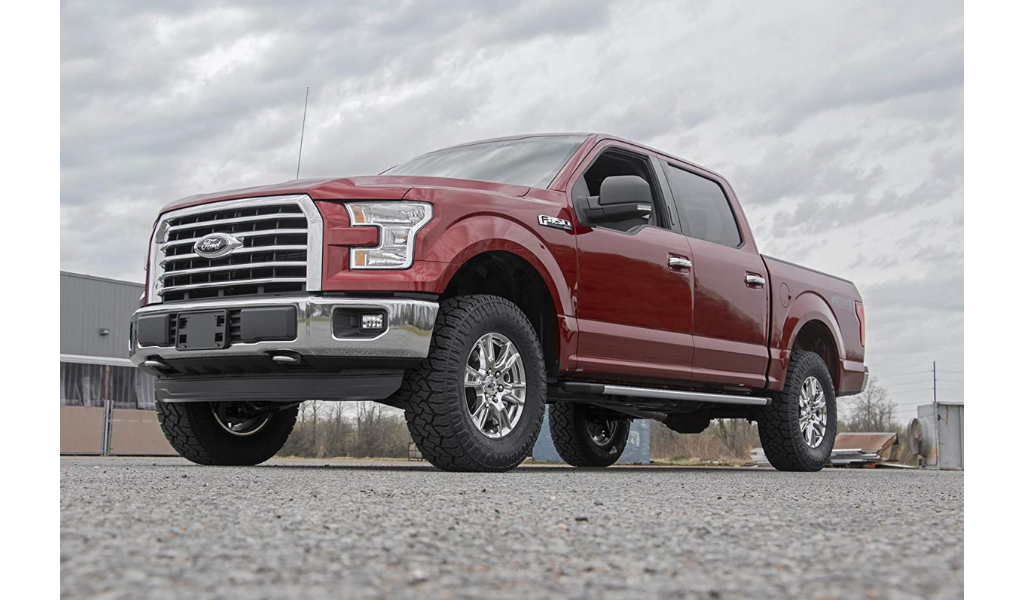Are you looking for a lift kit for your 2WD truck? Is there no lift kit on the market for the specific model of your truck? Are 4WD lift kits all you can find?
These can be common scenarios for many owners of 2WD trucks, and today I intend to give solutions to all who are going through such problems.
2WD trucks are not as commonly lifted as 4WD trucks. That may be the reason why there are so few lift kits for 2WD truck models on the market in comparison to 4WD models.
So, it’s possible that when you search around for lift kits, all you can find are ones that are targeted at 4WD models of your specific truck.
So, this question may come to you naturally: “Can a 4WD lift kit fit on a 2WD?”
Yes, you definitely can fit a lift kit that’s designed for 4WD on your 2WD truck, but in many cases, some components won’t fit and will be a waste of money.
Let’s dig deeper and look at the challenges of installing a 4WD lift kit on a 2WD truck, as well as the benefits and drawbacks of doing so.
Why Fitting 4WD Lift Kits in 2WD Trucks are Problematic

In most cases, a 4WD lift kit is not compatible with a 2WD truck because the suspension and drivetrain components of the two types of vehicles are different.
A 4WD (four-wheel drive) lift kit is specifically designed for use on a 4WD vehicle that has both front and rear axles, transfer cases, and front and rear driveshafts that transmit power to all four wheels.
These additional drivetrain components are not present in a 2WD (two-wheel drive) truck, which has only two driven wheels at the rear axle.
When you install a lift kit on a vehicle, you are modifying the suspension system to increase the height of the vehicle’s body and its clearance from the ground.
A lift kit typically includes components such as taller springs, shocks, and other suspension parts, as well as longer driveshafts, brake lines, and other parts that are required to accommodate the increased height.
Because 4WD trucks have additional drivetrain components that 2WD trucks do not, the design of a 4WD lift kit takes these additional components into account.
Attempting to install a 4WD lift kit on a 2WD truck can result in a number of problems. For example, the longer driveshafts that are included in a 4WD lift kit may not fit properly on a 2WD truck, which can result in driveline vibrations, handling problems, and even damage to the drivetrain.
The suspension components may also not fit properly, which can lead to issues with alignment, steering, and handling.
For these reasons, it is generally recommended that you use a lift kit that is specifically designed for your type of vehicle. If you want to lift a 2WD truck, you should look for a lift kit that is specifically designed for 2WD trucks.
This will ensure that the lift kit is compatible with the components of your vehicle and is designed to provide the appropriate lift height without compromising safety or performance.
Will a 4WD 2-inch Lift Kit Fit a 2WD Truck?

In many cases, a 2-inch lift kit intended for a 4WD model will fit a 2WD model as well, as long as it is a non-crossmember lift kit.
The reason for this is the methods used by most 2-inch lift kits to achieve the desired lift height. Let me elaborate on my answer.
2 inches is quite a small amount in terms of lift height. That’s why most 2-inch lift kits are non-crossmember. It will be helpful to know the difference between crossmember and non-crossmember lift kits, so let’s talk about it briefly.
What is a Crossmember? How Does It Make a Difference Between Lift Kits?
A crossmember is a structural component in a vehicle’s frame that spans from one side of the vehicle to the other, typically running perpendicularly.
It’s made of strong and durable materials, and its main purpose is to reinforce the chassis and provide additional support for the vehicle’s weight and load-bearing components, such as the engine, transmission, and suspension.
Lift kits that target a higher amount of lift (often 4 inches or more) often come with specialized crossmembers. These crossmembers drop down further to add an inch or two of height.
Also, they are made to be able to fit other components of the lift kit that would not fit with the stock crossmember of a vehicle.
Now let’s get back to why they are important in this discussion.
2-inch lift kits for 4WD trucks that come with customized crossmembers won’t fit a 2WD truck.
The reason for this is that 2WD trucks’ components on the front are quite different from 4WD trucks’, as the front wheels of a 2WD truck are not driven by the engine. The axle and steering mechanisms are totally different on the front.
Also, the suspension angles are different too. So, if the lift kit you’re looking at is a suspension lift kit, the probability is that it won’t fit.
If it’s a body lift kit or a kit that relies on spacers, it will most certainly fit your truck.
Will a 4WD 4-inch Lift Kit Fit a 2WD Truck?

This is where the conversation gets a little bit trickier. Because, even if a 4-inch lift does not sound like much, it still requires some precise components to be incorporated into a vehicle in such a way that it does not negatively affect the vehicle too much.
For example, some people go out of their way to stack lift blocks instead of buying an actual lift kit. This may be an inexpensive option, but it poses some challenges, and the performance and safety of the vehicle drop. You can read my article on stacking lift blocks by following this link.
So, how do 4-inch lift kits work? How do people get a 4-inch lift without risking too much? And will those methods work for lifting 2WD trucks as well?
Let me answer these questions in detail.
4 inches of lift is achievable by combining different lifting methods, but complete lift kits are recommended more because they are made with specific models in mind.
What this means is that a lift kit will fit a vehicle and lift it without compromising the vehicle’s factory-optimized alignment, balance, driving experience, or performance.
On the other hand, when you go for cheaper methods, like combining a leveling kit with rear lift blocks or stacking blocks, the vehicle does not stay optimized anymore.
Even if the modification job is done by professionals, there is only so much they can do to make the vehicle perform well.
So, what makes this relevant in this discussion?
You can, however, install spacers and leveling kits designed for 4WD vehicles in a 2WD vehicle. But as I’ve just explained to you, this will not bear good results.
For a desirable outcome, lift kits are recommended, but 4WD lift kits at this height are mostly not compatible with 2WD models. Even if some components fit, other components won’t.
For example, you may be able to fit certain spacers and some rear springs and shocks. But the drastic difference in the front suspension will render a 4WD lift kit incompatible with the front axles and suspensions of a 2WD vehicle.
Thus, the lifting job will turn out sloppy, and your vehicle will turn out for the worse.
Or, you may spend big bucks for a 4-inch lift kit only to get an inch or two, which you could’ve gotten by buying the specific components that do fit.
Will a 4WD 6-inch Lift Kit Fit a 2WD Truck?

The straight answer will be “no,” for the same reason a 4-inch 4WD lift kit does not fit a 2WD vehicle.
6 inches is quite high for lifting height. Starting from here, the suspension components are more drastically different than stock components, and the changes that occur after installing them are more drastic as well.
These higher lift kits will be extremely difficult, if not impossible, to install on a 2WD model. And even if you do, the vehicle will be significantly worse and even more risky to drive.
In many cases, your 2WD vehicle will be rendered useless after the tedious, time-consuming, and costly process of installing a 6-inch or higher lift kit designed for a 4WD vehicle in it.
Frequently Asked Questions
Can You Put a Lift on a 2WD?
Yes, you absolutely can.
2WD trucks and SUVs are not usually lifted as they are not as well suited for off-roading as 4WD ones. But there’s no reason why you can’t lift a 2WD.
There are aftermarket lift kits, leveling kits, and individual lifting components for 2WD vehicles available on the market.
Is It Worth Lifting a 2WD Truck?
If you drive on rough road surfaces often with your 2WD truck, extra ground clearance is always helpful.
A moderate lift will help you clear bumps, rocks, and protruding road surfaces with ease and without scraping the bottom of your truck.
Is 2WD Good for Off-Roading?
There’s not much difference between 2WD and 4WD on paved roads or highways. But 4WD vehicles are generally better at off-roading.
All four wheels are engine-driven in a 4WD vehicle, which provides much-needed control over rough and/or slippery terrains.
2WD vehicles do not struggle that much on off-roads, though. The differences are subtle. The only drawback is that if your wheels get stuck in a pothole or mud, the vehicle will be harder to get out.
Can 2WD Handle Snow?
On slippery surfaces like snow or mud, 2WD vehicles generally struggle a little. On these types of surfaces, front-wheel drive 2WD vehicles outperform rear-wheel drive vehicles.
Is It Worth Getting 4WD over 2WD?
4WD vehicles offer more acceleration and tractability, which is generally helpful in off-roading. They also perform better, but the difference becomes more subtle after speeding up.
4WD vehicles consume more fuel, though, in comparison to 2WD. The trade-offs are not that drastic, other than extreme off-roading. You be the judge as to which one would suit your needs better.